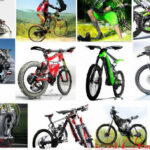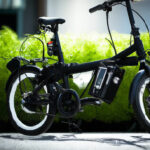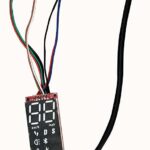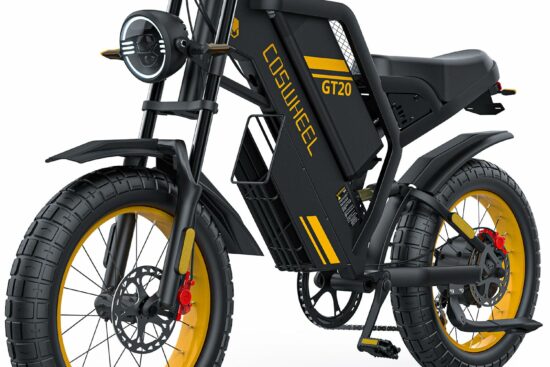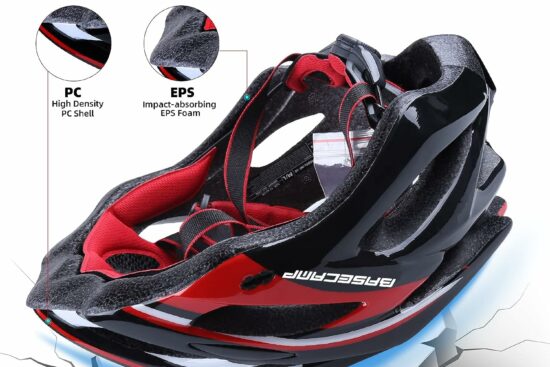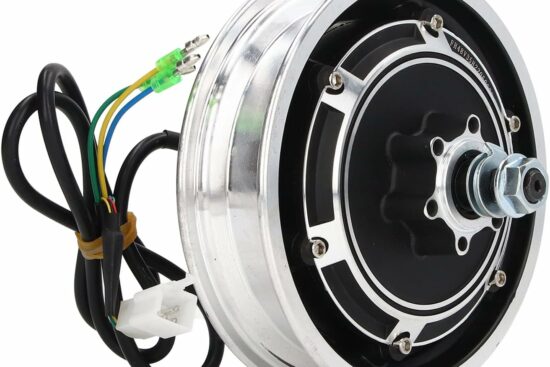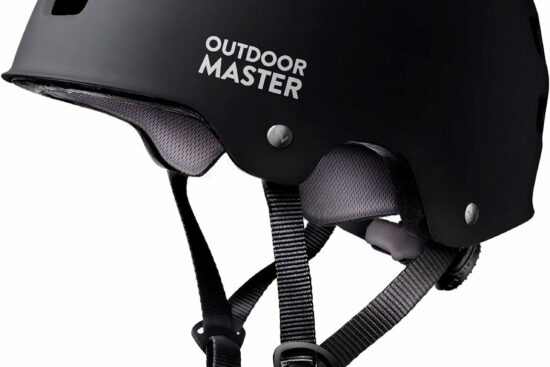
When searching for the perfect electric bike to meet your needs, it is essential to consider the key features that will enhance your riding experience. From battery life and motor power to comfort and design, each aspect contributes to the overall performance and functionality of an electric bike. Investing in an electric bike with the right features can provide you with not only an efficient mode of transportation but also a thrilling and enjoyable ride. In this article, we will explore the crucial features to look for when selecting an electric bike, ensuring that you make an informed decision that suits your personal preferences and requirements.
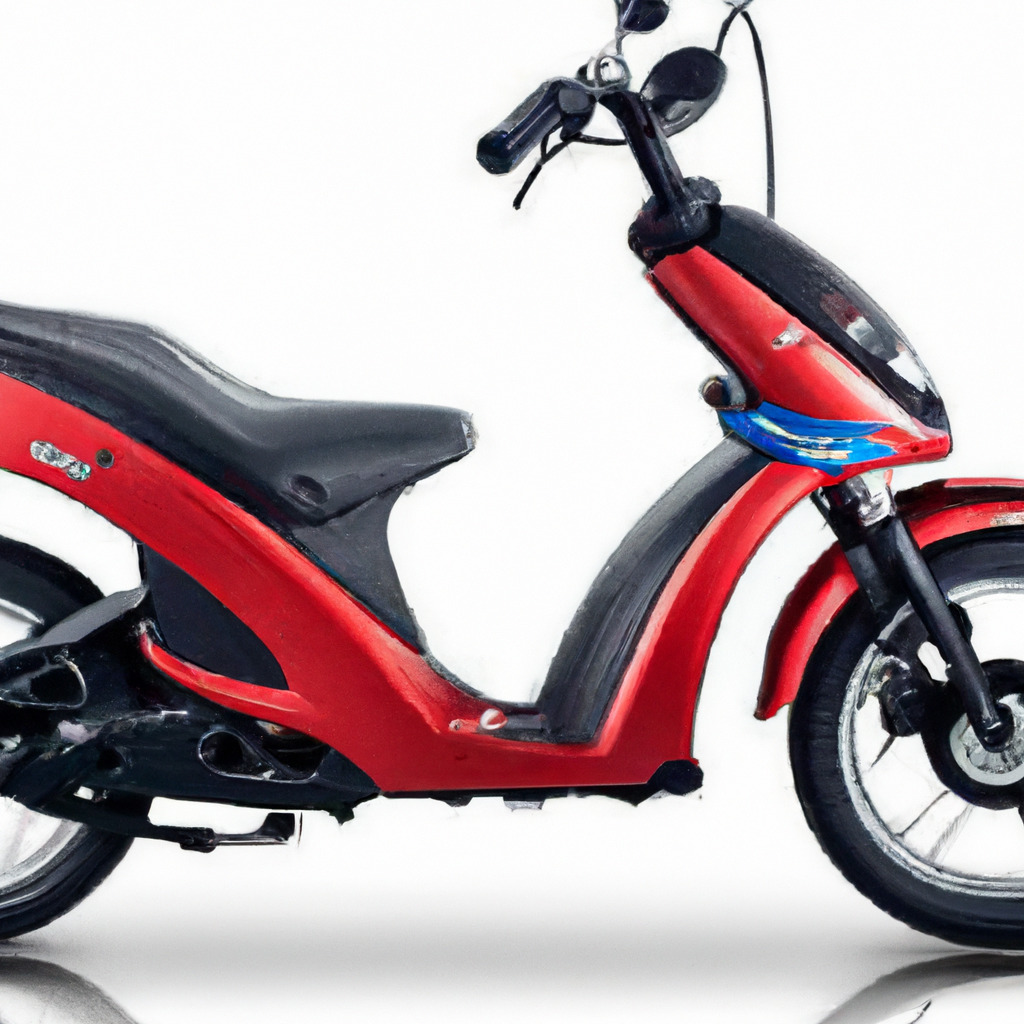
Battery
Battery Capacity
When choosing an electric bike, one of the most important factors to consider is the battery capacity. This refers to the amount of energy that the battery can store, which directly impacts the range of the bike. A higher battery capacity means a longer distance that can be covered on a single charge. It is recommended to choose a bike with a battery capacity that suits your needs and riding habits. If you plan on longer rides or have a daily commute, a bike with a larger battery capacity would be more suitable.
Removable vs. Non-Removable Battery
Electric bikes come with either removable or non-removable batteries. Removable batteries provide the convenience of being able to charge the battery separately from the bike, which can be especially useful if you have limited charging access. Non-removable batteries, on the other hand, are integrated into the frame of the bike and cannot be easily detached. The advantage of non-removable batteries is that they are usually more secure and protected against theft. Consider your charging needs and security preferences when deciding between removable and non-removable batteries.
Charging Time
The charging time of an electric bike battery is another important factor to consider. This refers to the amount of time it takes to fully charge the battery from empty to full. Different electric bikes have different charging times, depending on their battery capacity and the charger used. It is crucial to check the manufacturer’s specifications and choose a bike with a charging time that fits your schedule. If you have limited time for charging, look for models that offer fast charging capabilities.
Battery Management System
A battery management system (BMS) is a crucial component of an electric bike’s battery. It is responsible for monitoring and protecting the battery from overcharging, overheating, and other potential issues. A well-designed BMS helps to prolong the battery’s lifespan and ensures its optimal performance. When considering an electric bike, look for models that have a reliable and advanced BMS to ensure the safety and longevity of your battery.
Motor
Motor Type
The motor is the heart of an electric bike, providing power and propulsion. There are different types of motors used in electric bikes, including hub motors and mid-drive motors. Hub motors are located in the hub of either the front or rear wheel and provide direct power. Mid-drive motors, on the other hand, are located at the crankshaft, providing power directly to the drivetrain. Each motor type has its own advantages and disadvantages, so it is important to consider factors such as torque, efficiency, and overall ride feel when choosing the motor type that suits your needs.
Motor Power
Motor power refers to the amount of power or wattage that the motor can produce. Higher motor power generally results in faster acceleration and better uphill performance. However, it is important to find a balance between motor power and battery capacity, as a more powerful motor can drain the battery faster. Consider your typical riding conditions and the level of assistance you require when choosing the motor power for your electric bike.
Motor Placement
Another important aspect to consider is the placement of the motor on the electric bike. As mentioned earlier, hub motors can be located in either the front or rear wheel hub. Rear hub motors provide better traction and a more balanced feel, while front hub motors offer easier maintenance and a simpler design. On the other hand, mid-drive motors provide a more natural riding experience as they distribute power through the bike’s drivetrain. Consider your riding preferences and the terrain you often encounter when deciding on the motor placement for your electric bike.
Motor Controller
The motor controller is responsible for regulating the power output of the motor and ensuring smooth and efficient operation. It controls the speed, torque, and other motor functions. A high-quality motor controller can greatly enhance the overall performance and efficiency of an electric bike. Look for bikes that have advanced motor controllers that provide smooth acceleration, responsive power delivery, and customizable settings.
Frame
Frame Material
The frame of an electric bike plays a crucial role in its overall performance, comfort, and stability. Commonly used frame materials include aluminum, steel, carbon fiber, and titanium. Aluminum frames are lightweight, durable, and affordable, making them a popular choice for electric bikes. Steel frames offer excellent strength and durability but can be heavier. Carbon fiber frames provide the best combination of strength, lightweight, and vibration damping but are more expensive. Titanium frames offer similar properties to carbon fiber but at an even higher price point. Consider your budget, riding style, and weight preferences when choosing the frame material for your electric bike.
Frame Design
In addition to the material, the design of the frame also plays a role in the performance and comfort of the electric bike. frame designs can vary from traditional diamond frames to step-through frames. Diamond frames offer a more sporty and aggressive riding position, while step-through frames provide easier mounting and dismounting, making them more suitable for riders with limited mobility or wearing skirts. Consider your riding style, comfort preferences, and any physical limitations when choosing the frame design for your electric bike.
Weight and Stability
The weight of an electric bike is an important factor to consider, as it affects the ease of maneuverability and overall riding experience. Electric bikes tend to be heavier than traditional bicycles due to the additional components such as the motor and battery. However, advancements in technology have led to lighter electric bikes. It is essential to find a balance between weight and stability, as a heavier bike may provide better stability at higher speeds but can be more challenging to handle. Consider your physical strength, riding conditions, and intended use when assessing the weight and stability of an electric bike.
Step-Through vs. Diamond Frame
As mentioned earlier, step-through frames offer the advantage of easier mounting and dismounting, making them more accessible for riders of all ages and physical abilities. Diamond frames, on the other hand, provide a more traditional and sporty look. The choice between a step-through and a diamond frame ultimately depends on personal preference and individual needs. Riders who prioritize convenience and ease of use may prefer a step-through frame, while those who seek a classic and performance-oriented feel may opt for a diamond frame.
Tires
Tire Size
The size of the tires on an electric bike greatly impacts its overall performance and ride quality. Electric bikes typically come with either 26-inch or 28-inch tires, although other sizes also exist. Smaller 26-inch tires provide better maneuverability and acceleration, making them suitable for urban riding and off-road adventures. Larger 28-inch tires offer better rolling efficiency and stability, making them ideal for longer rides and paved surfaces. Consider your riding style, terrain, and intended use when choosing the tire size for your electric bike.
Tire Type
Electric bikes can be equipped with different tire types, including slick tires, semi-slick tires, and knobby tires. Slick tires have a smooth tread pattern and are ideal for road riding, providing low rolling resistance and increased efficiency. Semi-slick tires feature a combination of a smooth center tread and slightly larger side knobs, offering a balance between road and off-road capabilities. Knobby tires have large and aggressive tread patterns, providing excellent traction on loose or muddy surfaces. Consider your typical riding conditions and terrain when selecting the tire type for your electric bike.
Tread Pattern
The tread pattern of the tires contributes to their overall grip and traction on different surfaces. Tires with a smooth or shallow tread pattern are suitable for paved surfaces and offer low rolling resistance. Tires with larger and more aggressive tread patterns provide better grip on loose or uneven terrain. Consider the types of surfaces you will be riding on and choose a tire tread pattern that matches your intended use. Keep in mind that wider and knobbier tires may provide better grip off-road but can be slower on smooth surfaces.
Puncture Resistance
Puncture resistance is an important factor to consider, especially if you plan on riding in urban environments or areas with debris on the road. Some tires come with additional puncture protection layers or reinforced sidewalls, offering increased resistance against flats. Consider the puncture resistance features of the tires and choose ones that provide peace of mind and durability for your daily commutes or longer rides.
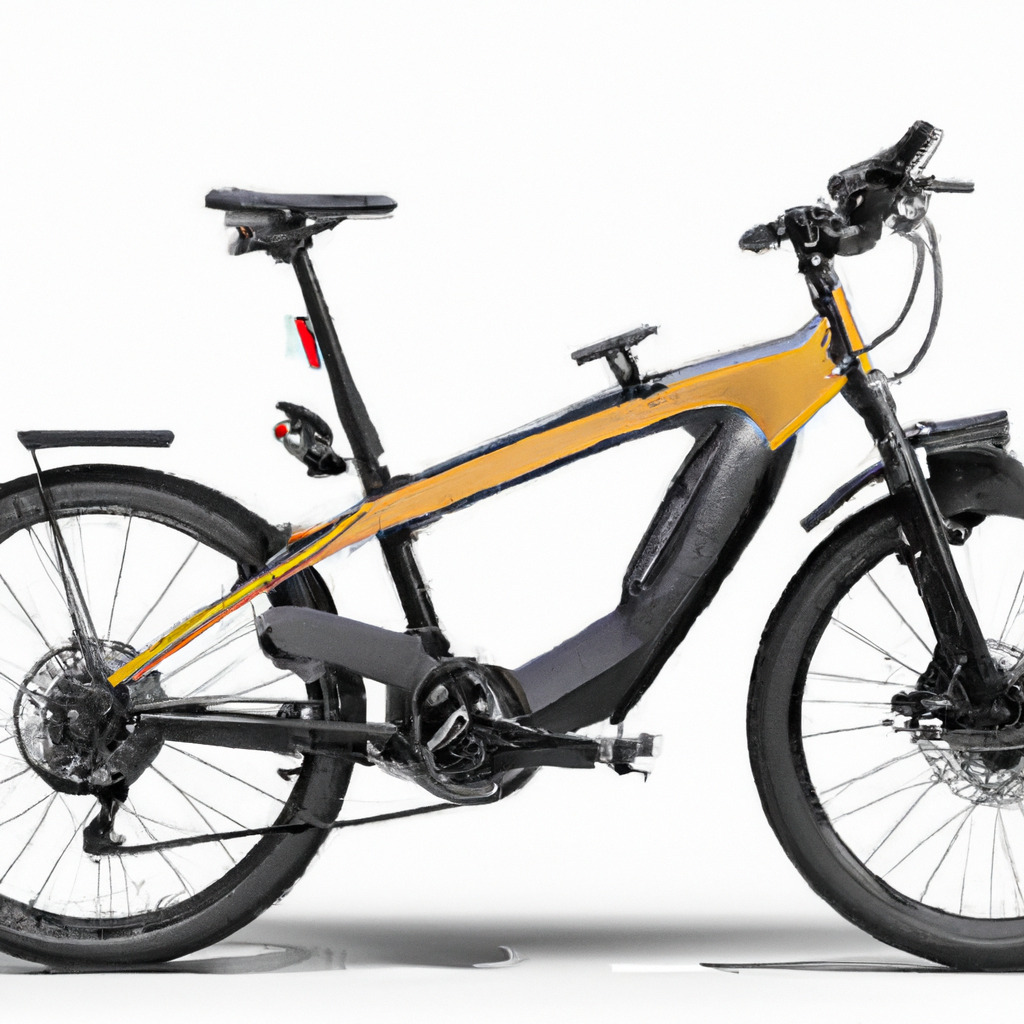
Brakes
Brake Type
The type of brakes on an electric bike greatly influences its stopping power and overall safety. There are different types of brakes commonly used in electric bikes, including mechanical disc brakes, hydraulic disc brakes, and rim brakes. Mechanical disc brakes offer consistent stopping power and are easier to maintain. Hydraulic disc brakes provide even more stopping power and better modulation, but may require more specialized maintenance. Rim brakes, on the other hand, use brake pads that directly grip the rims of the wheels and are lightweight and affordable. However, rim brakes tend to have less stopping power and can be influenced by wet conditions. Consider your riding style, the terrain you ride on, and your braking preferences when choosing the brake type for your electric bike.
Brake Power
The brake power of an electric bike refers to the ability of the brakes to bring the bike to a complete stop safely and efficiently. The brake power is influenced by factors such as the size and design of the brake discs, the brake calipers, and the brake pads. Look for electric bikes that come with high-quality brake components that offer reliable and consistent stopping power. Consider your riding conditions and any additional weight carried on the bike when assessing the desired brake power.
Brake Control
The brake control refers to the ease and precision with which the brakes can be activated and modulated. Electric bikes commonly come with either mechanical or hydraulic brake controls. Mechanical brake controls require more physical force to activate and provide less modulation. Hydraulic brake controls offer more precise control and require less effort to engage. Consider your hand strength and any specific needs for precise braking control when choosing the brake controls for your electric bike.
Regenerative Braking
Regenerative braking is a feature that some electric bikes offer, wherein the motor is used to generate electricity while braking or going downhill. This electricity is then stored back into the battery, effectively providing some recharging capability. Regenerative braking can extend the range of your electric bike and also reduce wear on the brake pads. However, it is important to note that regenerative braking is not as powerful as traditional brakes and may not provide the same level of stopping power. Consider whether regenerative braking is a feature you desire and evaluate the trade-offs between increased range and braking efficiency.
Gears
Gear Type
The gear type on an electric bike can greatly impact the overall ease of pedaling and the bike’s performance on different terrains. Electric bikes commonly come with either internal hub gears or derailleur gears. Internal hub gears are located inside the rear hub and provide a clean and low-maintenance gear system. They are suitable for urban riding and e-bikes with a step-through frame. Derailleur gears, on the other hand, use a system of chain, gears, and derailleur mechanism to change gears. This system offers a wide range of gear ratios and is more suited for off-road or performance-oriented riding. Consider your intended use, maintenance preferences, and shifting experience when choosing the gear type for your electric bike.
Gear Number
The number of gears an electric bike has is another important consideration. More gears provide a wider range of ratios, allowing for smoother pedaling and better adaptation to changes in terrain. Electric bikes commonly come with a range of 1 to 12 gears, with higher gear numbers offering more versatility. Consider the types of terrains you will be riding on and the level of assistance provided by the motor when determining the necessary number of gears for your electric bike.
Gear Shifting System
The gear shifting system determines how easily and smoothly the gears can be shifted while riding. Electric bikes can have either manual or electronic shifting systems. Manual shifting systems require physical force to change gears and are generally easier to maintain. Electronic shifting systems use a wireless or wired connection between the shifters and the derailleurs, allowing for precise and effortless shifting. Consider your shifting preferences, riding style, and budget when choosing the gear shifting system for your electric bike.
Electronic Shifting
As mentioned earlier, electronic shifting systems provide precise and effortless gear shifting. They can offer features such as auto-trimming, which adjusts the position of the derailleur automatically to minimize chain rub and maintain optimal gear performance. Electronic shifting systems require periodic battery charging but provide a high level of convenience and performance. Consider whether the additional cost and maintenance of electronic shifting are worth the benefits in terms of smooth and precise gear changes.
Display and Controls
Display Type
The display on an electric bike provides important information such as speed, battery level, pedal-assist level, and distance traveled. Different electric bikes come with various types of displays, including LCD displays, LED displays, and OLED displays. LCD displays are the most common and provide clear and readable information. LED displays are simpler and usually show basic information such as speed and battery level. OLED displays offer higher contrast and better visibility in different lighting conditions. Consider your preference for display type, readability, and the amount of information you require when choosing the display for your electric bike.
Display Features
In addition to the display type, the features provided by the display are also important to consider. Some displays offer additional features such as navigation, smartphone connectivity, and fitness tracking. These features can enhance your riding experience and provide valuable information. Consider the specific features that are important to you and choose a display that offers them.
Control Type
The control type refers to how the electric bike’s features and settings are adjusted and accessed. Common control types include buttons, tactile switches, and touchscreens. Each control type has its own advantages and disadvantages. Buttons and tactile switches are generally more durable and easier to use while riding, but may offer limited functionality. Touchscreen controls provide a more modern and intuitive interface but can be harder to use while riding, especially without haptic feedback. Consider your preference for control type and the ease of use in different riding conditions when selecting the control system for your electric bike.
Control Placement
The placement of the controls on the electric bike is an important factor to consider, as it affects the ease of accessing and adjusting the bike’s features while riding. Common control placements include handlebar-mounted controls, thumb controls, and integrated controls on the display. Handlebar-mounted controls offer easy access and adjustment but can make the handlebars cluttered. Thumb controls are typically mounted near the grips and allow for quick adjustments without moving your hands from the handlebars. Integrated controls on the display provide a clean and streamlined look but may require more attention and effort to use. Consider your riding preferences and the level of convenience you require when choosing the control placement for your electric bike.
Suspension
Front Suspension
Front suspension on an electric bike refers to a suspension fork that is mounted on the front wheel. It helps to absorb shocks and vibrations caused by rough terrain, providing a smoother and more comfortable ride. Front suspension is particularly beneficial for off-road riding and uneven surfaces. Consider the types of terrains you will be riding on and your desired level of comfort when choosing an electric bike with front suspension.
Rear Suspension
In addition to front suspension, some electric bikes also come with rear suspension. Rear suspension helps to further absorb shocks and vibrations, ensuring a smoother and more controlled ride. It is particularly beneficial for riders who seek a higher level of comfort or engage in more aggressive off-road riding. However, rear suspension adds weight and complexity to the bike. Consider your riding style, terrain, and desired comfort level when deciding between an electric bike with front suspension only or both front and rear suspension.
Suspension Type
The type of suspension system used on an electric bike can vary, including air suspension, coil suspension, and hybrid suspension. Air suspension utilizes compressed air to provide a customizable level of suspension and is generally lighter and more adjustable. Coil suspension uses a coil spring that delivers a consistent and reliable level of suspension but can be heavier. Hybrid suspension combines both air and coil elements to provide a balance between weight and performance. Consider your riding needs, terrain, and desired level of adjustability when choosing the suspension type for your electric bike.
Adjustability
The adjustability of the suspension system allows riders to fine-tune the performance and comfort of the electric bike. Some suspension systems offer adjustable features such as compression damping, rebound damping, and sag setting. These adjustments allow riders to optimize the suspension for their weight, riding style, and terrain conditions. Consider whether having adjustable suspension is important to you and choose an electric bike with a suspension system that offers the necessary adjustability options.
Range
Range Estimate
The range of an electric bike refers to the distance it can cover on a single charge. Electric bikes vary in their range capabilities, depending on factors such as battery capacity, motor efficiency, terrain, and rider weight. When considering an electric bike, it is important to take into account the manufacturer’s range estimate. However, it is crucial to note that actual range may vary depending on the riding conditions and the level of assistance used. To get a better estimate of the range, consider your typical riding habits, terrain, and the level of assistance you require.
Factors Influencing Range
Several factors can impact the range of an electric bike. The terrain, wind conditions, rider weight, and the level of pedal assistance all play a role in determining the actual range achievable. Riding on hilly or rough terrain requires more power and can reduce the range. Windy conditions can also increase resistance and result in shorter range. Additionally, a heavier rider or carrying additional weight can put more strain on the battery and decrease the range. Consider these factors when evaluating the manufacturer’s range estimate and determining the expected range for your electric bike.
Pedal-Assist vs. Throttle
Electric bikes can provide assistance through either pedal-assist or throttle control. Pedal-assist, also known as pedal-assist mode, provides assistance only when the rider is pedaling. The electric motor senses the rider’s pedaling force and provides additional power accordingly. Throttle control, on the other hand, allows the rider to engage the motor with a thumb lever or twist grip without the need for pedaling. Pedal-assist systems generally offer better range due to the increased efficiency of utilizing the rider’s own physical effort. Throttle control can drain the battery faster but provides the convenience of immediate power without pedaling. Consider your preferred riding style, the level of physical effort desired, and the impact on range when choosing between pedal-assist and throttle control for your electric bike.
Accessories
Lights
Lights are an essential accessory for any electric bike, providing visibility and safety, especially in low-light conditions. Electric bikes commonly come with integrated lights or have mounting points for lights to be added. Consider the quality and brightness of the lights, as well as whether they are powered by the bike’s battery or require separate batteries. It is important to choose lights that comply with local regulations and provide sufficient illumination for your riding needs.
Fenders
Fenders are useful accessories that help to keep the rider and the bike clean and protected from dirt, mud, and water. They are particularly beneficial when riding in wet or muddy conditions or on paved surfaces that may accumulate debris. Look for electric bikes that come with fenders or have mounting points available to add fenders. Consider the size and coverage of the fenders to ensure maximum protection and coverage.
Racks
Racks are useful accessories for electric bikes, providing additional storage and convenience for carrying items such as bags, groceries, or camping gear. Rear racks are commonly found on electric bikes, allowing for the attachment of panniers or baskets. Some electric bikes also offer front racks for additional storage options. Consider the weight capacity and compatibility of the racks with various bag or basket options when choosing an electric bike with racks.
Locks
Having a reliable and secure lock is essential for preventing theft and ensuring the safety of your electric bike. Electric bikes are valuable investments, so it is important to choose a lock that is strong and durable. Different types of locks are available, including U-locks, cable locks, and folding locks. U-locks offer high security but may be heavier and less flexible. Cable locks are lighter and more flexible but may provide less security. Folding locks provide a balance between security and portability. Consider your specific security needs, the weight and portability of the lock, and the level of protection desired when choosing a lock for your electric bike.
In conclusion, when choosing an electric bike, it is important to consider a variety of factors related to the battery, motor, frame, tires, brakes, gears, display and controls, suspension, range, and accessories. The battery capacity, type, and charging time directly impact the range and usability of the bike. The motor type, power, placement, and controller affect the performance and ride feel. The frame material, design, and weight influence the durability and stability of the bike. The tires, brakes, gears, and suspension impact the handling, control, and comfort of the bike. The display, controls, and range estimation provide information and adjustability. Lastly, accessories such as lights, fenders, racks, and locks enhance the functionality and convenience of the electric bike. By carefully considering these key features, you can find an electric bike that suits your individual needs and preferences, ensuring an enjoyable and efficient riding experience.



